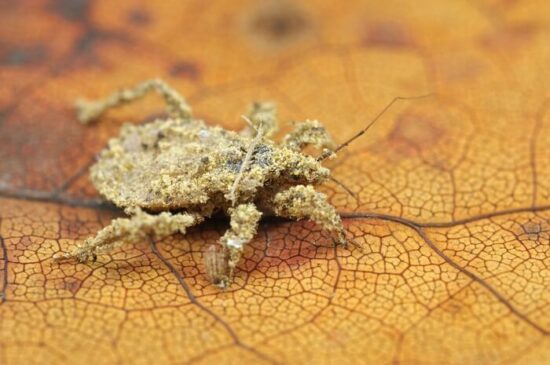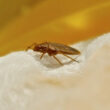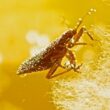The list of bed bug natural predators is quite long, but there are some animals that stand above the rest. There are certain insects, spiders, geckos that love to snack on these pests!
So what eats bed bugs? Scroll down to find out.
1. The Masked Hunter
Also known as the masked bed bug hunter or simply the bed bug hunter, the masked hunter is a dark brown, gray or black nocturnal insect that’s characterized by an elongated body and wings. As nymphs, these insects naturally glue themselves to dust and dirt for camouflage, hence their “masked” name. Out of all the bed bug natural predators, these are probably the most efficient.
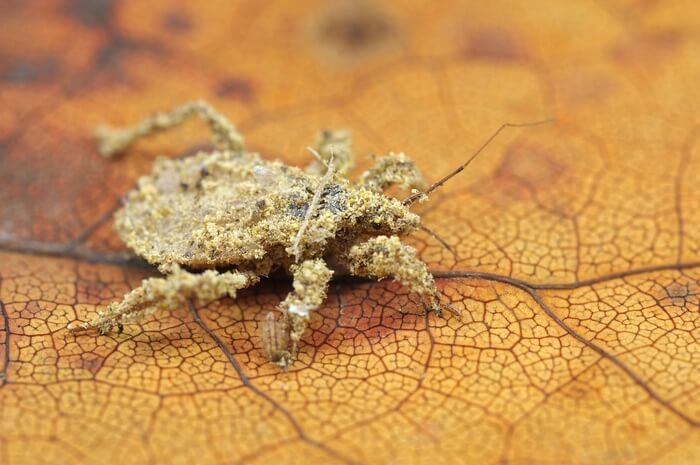
Found primarily in the eastern and central areas of the U.S., the masked hunter can adapt to cold climates but prefers those that are warm and dry. These insects commonly live in barns where they feed on such arthropods as carpet beetles, bat bugs and, yes, bed bugs. Here the masked hunter maintains a symbiotic relationship with bats and pigeons by eating bed bugs. Because of its predatory nature, the masked hunter, scientifically known as Reduvius personatus, belongs to the insect family Reduviidae, commonly known as “assassin” bugs.
The masked hunter’s bite can be almost as painful as a snake bite, so it’s not the most desirable bed bug predator to have around. Some subspecies of this insect can also pass along diseases through their bites.
2. Ants
Of all the ant species, the number one natural predator of bed bugs is the pharaoh ant, or Monomorium pharaonis.
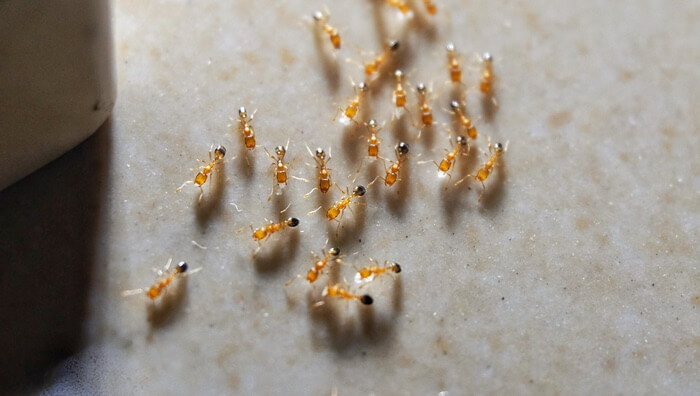
A light yellowish brown with red and black abdominal markings, this small ant is found all across the U.S. and can actually prove to be a greater problem than bed bugs. Pharaoh ants, and all ant species for that matter, multiply at an astonishing rate and can rapidly infest a home through poorly-sealed windows or doors or through damaged window screens. If threatened, they will break off into separate colonies and quickly get out of control. In addition, because they’re known for scrounging for food, ants can contaminate any food they touch and can rapidly spread diseases such as dysentery and salmonella.
Pharaoh ants nest in remote places such as floorboards and cracks in walls, so they can be extremely difficult to exterminate.
Fire ants will also actively pursue and eat live bed bugs. Named for their color, as well as for their painful, burning sting, these red ants prefer warm, dry and sunny areas, such as open fields. The fire ants’ sandy mounds, where they also nest, can often be seen after a rainfall. One colony can contain as many as 100,000-500,000 ants and will include at least one queen, if not several. In one colony, there may be as many as 250,000 workers, whose lifespan is around six months. However, queens can live as long as two to five years! The colony may spread over many properties.
An invasive species, fire ants are believed to have entered the U.S. in the 1930s as stowaways on cargo shipments. They eventually spread throughout the southern U.S. from Florida to Virginia to Oklahoma to California.
Omnivorous by nature, fire ants will not only eat bed bugs but also other insects and their eggs, earthworms, spiders, ticks, honeydew and seeds. They’ve also been known to consume, dead or alive, young vertebrates, including birds, rodents and even calves!
A fire ant violently attacks its prey by grabbing it with its mandibles and injecting an alkaloid venom via a painful sting. In humans, the sting can result in severe reactions, including excessive itching, nausea, sweating and even death.
Another ant species that’s a bed bug predator, the Argentine ant, or Linepithema humile, is uniquely characterized by its 12-segmented body. This invasive species prefers moist areas and often takes over the territory of native ants.
Because they’re attracted to waste and decay, Argentine ants can effectively spread bacteria. Building a network of colonies, these pests can take control of areas as large as a city block. Although these ants are omnivorous and will eat anything including bed bugs, they’re partial to sweet foods such as honeydew.
3. Cockroaches
One of the most notorious of pests, the American cockroach will eat almost anything it can find, including bed bugs. Because it’ll even eat garbage, the cockroach can easily spread diseases such as cholera, leprosy, dysentery, plague, typhoid fever and polio, and can also irritate allergy sufferers with its allergen-rich saliva and feces.
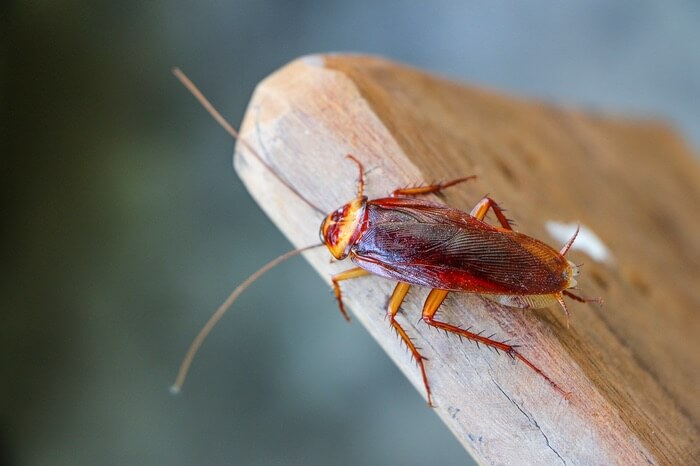
Native to tropical Africa, the American cockroach, or Periplaneta americana, is thought to have come to the New World aboard ships. Primarily an outdoor dweller, the reddish-brown or mahogany cockroach inhabits humid and shady areas in the South and drains and sewers in the North. It will invade indoor settings if the outdoor temperature drops below 70 degrees Fahrenheit or if it can’t find enough food.
A female cockroach deposits around 16 eggs in a protective red or dark brown capsule, preferring a warm and damp environment, such as a flower bed or under mulch. Indoors, it may deposit its capsule under cabinets and appliances or in storage areas in garages or sheds. When the nymphs hatch, they exit the capsule and can reach adulthood in fewer than six months if they’re well fed.
In the wild, American cockroaches consume leaves, algae, fungi and pieces of wood. Once indoors, they’ll search drains, kitchen cabinets and counters for crumbs, scraps and even pet food.
If you find small cockroach droppings in your pantry, basement or under appliances, you’ll know you have a problem. You can distinguish them from mouse droppings by the blunt ends and side ridges. Mouse droppings, in contrast, are pointed on the ends and may contain hair. You may also detect cockroaches by their musty-smelling pheromone that serves to keep the insects within their group.
Other species of cockroaches will also eat bed bugs, including the Oriental cockroach (aka Blatta orientalis), the German cockroach (Blattella germanica), and the brown-banded cockroach (Supella longipalpa).
4. House Centipedes
Among the various species of centipedes, the house centipede (scientifically known as Scutigera coleoptrata) is the primary type that typically eats bed bugs. If there are only a few house centipedes in your home, you may not even know it because they’re rarely visible unless they’re looking for food. House centipedes tend to hide in damp areas such as bathrooms, kitchens, garages and basements or crawl spaces.
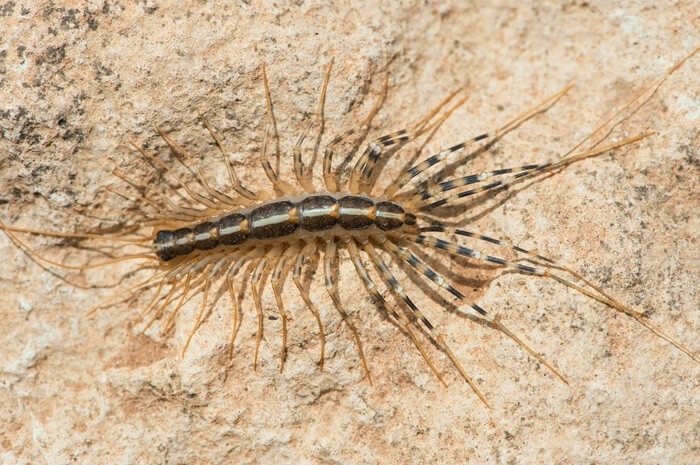
Measuring up to 1 1/2 inches long, the house centipede features a flat, yellowish-brown body with three dark stripes along the top. One pair of long, thin, black-and-white banded legs is located on each of the body’s 15 segments. The larvae hatch with only four pairs of legs, but more legs develop during the insect’s six stages into adulthood.
Even though the centipede will eat bed bugs, you’ll probably decide that you’d prefer it if they weren’t around, as this relatively large arthropod can inflict a poisonous bite that’s equally as painful as a bee sting.
5. Spiders
Spiders eat bed bugs, but some partake more than others! Of the many species of spiders, Thanatus flavidus is probably the greatest bed bug natural predator. Native to Greece, Russia and Ukraine, this spider is known as a skillful hunter and has been documented to attack and eat bed bugs.
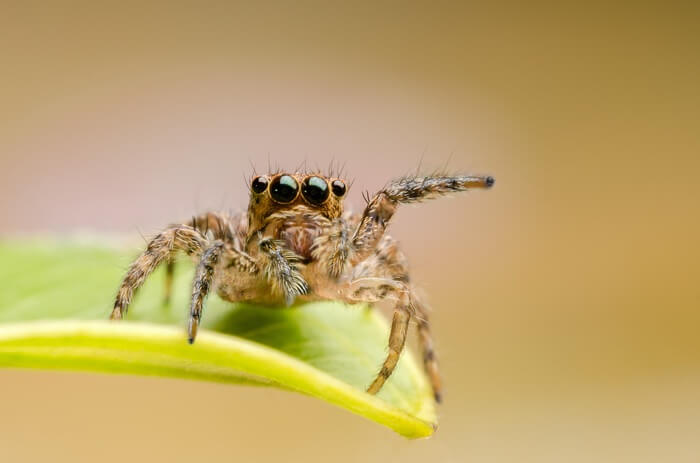
Because most species of spiders are just about the size of a bed bug, only the larger species, including Thanatus flavidus, jumping spiders, running crab spiders, wolf spiders and yellow sac spiders, are equipped with the hunting capability needed to catch and eat bed bugs. Unlike the smaller species of spiders that spin webs to catch their prey, the larger species either sneak up on or jump on their prey. On rare occasions, a smaller spider may attempt to consume a bed bug caught in its web.
Compared with other bed bug natural predators, spiders are among the more desirable to have around. Although they do bite, spiders don’t spread diseases like many other animals that eat bed bugs.
6. Mites
The common house dust mite lives in bedding, ready to eat tiny bed bugs that happen to wander by. What could be more tempting than the opportunity to conveniently snatch a meal that’s right next to you?
Many people think of mites as nothing more than a nuisance. And while you probably want to get rid of them, their role as an insect that eats bed bugs is definitely a silver lining!
7. Geckos
Lizards are notorious bug eaters, and among lizards, the gecko is an adept bed bug predator. However, even though geckos eat bed bugs, they need a special habitat. That means they usually don’t encounter bed bugs, either in their natural surroundings or in an indoor terrarium.
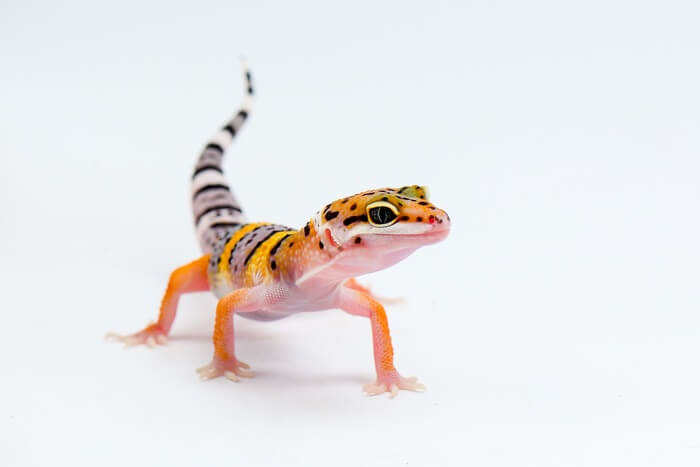
Each species of this lovable little lizard has developed characteristics to help it survive in habitats ranging from cold mountains to deserts to rainforests. In fact, every continent except Antarctica is home to one or more species of gecko.
A favorite of gecko enthusiasts, the common leopard gecko, or Eublepharis macularius, is native to the deserts and dry, rocky grasslands of the Middle East and Asia. Preferring to feed on insects, the leopard gecko will certainly eat bed bugs, but they probably won’t find any in the tank you’ve provided for its home!
Do Common Pets Eat Bed Bugs?
You’re probably wondering whether your pet cat or dog will eat bed bugs. The simple answer is no, they don’t deliberately hunt, kill or eat bed bugs. However, although cats and dogs have been domesticated for millennia, our contemporary pets still do retain their hunting and chasing instincts.
You often see your cat swatting at insects and even eating them, sometimes regretting having bitten into a bad-tasting bug. Bed bugs, however, are so small that our pets usually don’t even notice them. Your cat’s eyes are designed to detect movement, and they’re not able to focus on objects within a foot of vision. Therefore, it’s likely to ignore any nearby bed bugs.
Your dog, as well, would probably not be interested in such a tiny thing as a bed bug. Thanks to your dog’s keen sense of smell, however, it might be able to sniff out bed bugs. If you find your dog sniffing your bed, take note. It might not be just enjoying the scent of your freshly-washed sheets!
Conclusion
Now that you know what animals eat bed bugs, it’s time to use that to your advantage. While many of these bed bug natural predators shouldn’t be kept in your home, having some around your property might not hurt!
But at the end of the day, it’s just nice to know that there are animals out there who are helping to keep these pests in check.
